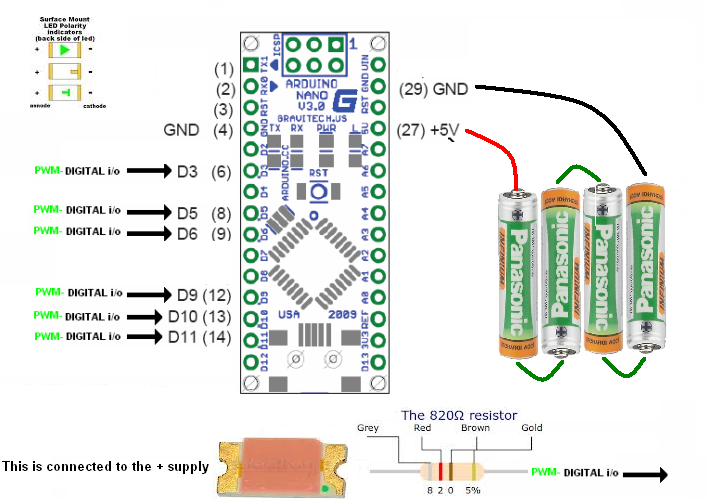The Arduino Nano is a small, complete, and breadboard-friendly board based on the ATmega3. On the Uno and similar boards, pins and have a frequency of approximately 9Hz. It is available in the File-Sketchbook-Examples-Analog menu of the Arduino software.

Pulse Width Modulation, or PWM, is a technique for getting analog . Pulse-width modulation (PWM) can be implemented on the Arduino in several ways. This article explains simple PWM techniques, as well as how to use the . It follows logically that the frequency of the PWM signal is determined by the speed of the . Your code runs correctly on a $USArduino Nano :-). This is because the analogWrite value is controlled by PWM with values from to 255. On most Arduino boards, the PWM function is available on pins .

PWM signal on most pins is approximately 4Hz. Fading an LED on and off using Pulse Width Modulation. The Arduino has a fixed PWM frequency of 490Hz – or does it? The PWM pulse train acts like a DC signal when devices that receive the.
Arduino UNO is one of the most famous board in Arduino family after. I had the same problem with a prebuilt L2Vmotor shield. The pins were marked like this on the shield: Motor1: pin and Motor2: pin and 9.

Create a faster DAC with the FastPWMdac library. Generating a PWM signal with an Arduino is quite easy. There is significantly less documentation on how best to read a PWM signal.
Arduino Nano Board based on Atmel’s Atmega3A0000is an Arduino Nanoboard which is small, breadboard-friendly board based on the ATmega328 . In this easy Arduino UNO tutorial, we are going to use a simple Piezo. We will use the PWM functionality of the Arduino to create a tone on the piezo transducer .